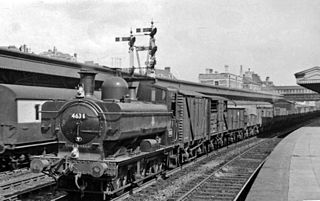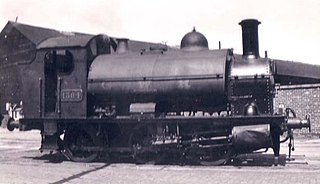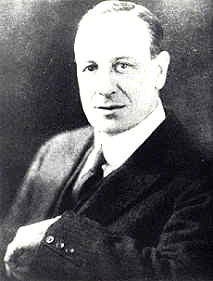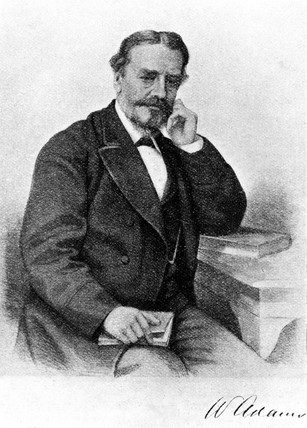| GWR 1101 Class | |||||||||||||||||||||||||||||||||||||||||||||||
|---|---|---|---|---|---|---|---|---|---|---|---|---|---|---|---|---|---|---|---|---|---|---|---|---|---|---|---|---|---|---|---|---|---|---|---|---|---|---|---|---|---|---|---|---|---|---|---|
 No. 1105 at Danygraig Depot 1946 | |||||||||||||||||||||||||||||||||||||||||||||||
| |||||||||||||||||||||||||||||||||||||||||||||||
| |||||||||||||||||||||||||||||||||||||||||||||||
| |||||||||||||||||||||||||||||||||||||||||||||||
| |||||||||||||||||||||||||||||||||||||||||||||||
The GWR 1101 Class was a class of 0-4-0T side tank steam locomotives built by the Avonside Engine Company to the order of the Great Western Railway in 1926 as Dock shunters.
| GWR 1101 Class | |||||||||||||||||||||||||||||||||||||||||||||||
|---|---|---|---|---|---|---|---|---|---|---|---|---|---|---|---|---|---|---|---|---|---|---|---|---|---|---|---|---|---|---|---|---|---|---|---|---|---|---|---|---|---|---|---|---|---|---|---|
 No. 1105 at Danygraig Depot 1946 | |||||||||||||||||||||||||||||||||||||||||||||||
| |||||||||||||||||||||||||||||||||||||||||||||||
| |||||||||||||||||||||||||||||||||||||||||||||||
| |||||||||||||||||||||||||||||||||||||||||||||||
| |||||||||||||||||||||||||||||||||||||||||||||||
The GWR 1101 Class was a class of 0-4-0T side tank steam locomotives built by the Avonside Engine Company to the order of the Great Western Railway in 1926 as Dock shunters.
They passed into British Railways ownership in 1948 and were numbered 1101–1106.

All were withdrawn and scrapped between 1959 and 1960.
The London, Midland and Scottish Railway had the largest stock of steam locomotives of any of the 'Big Four' Grouping, i.e. pre-Nationalisation railway companies in the UK. Despite early troubles arising from factions within the new company, the LMS went on to build some very successful designs; many lasted until the end of steam traction on British Railways in 1968. For an explanation of numbering and classification, see British Rail locomotive and multiple unit numbering and classification.

Woodham Brothers Ltd is a trading business, based mainly around activities and premises located within Barry Docks, in Barry, South Wales. It is noted globally for its 1960s activity as a scrapyard, where 297 withdrawn British Railways steam locomotives were sent, from which 213 were rescued for the developing railway preservation movement.

The first Locomotives of the Great Western Railway (GWR) were specified by Isambard Kingdom Brunel but Daniel Gooch was soon appointed as the railway's Locomotive Superintendent. He designed several different 7 ft 1⁄4 in broad gauge types for the growing railway, such as the Firefly and later Iron Duke Class 2-2-2s. In 1864 Gooch was succeeded by Joseph Armstrong who brought his standard gauge experience to the workshops at Swindon. To replace some of the earlier locomotives, he put broad gauge wheels on his standard gauge locomotives and from this time on all locomotives were given numbers, including the broad gauge ones that had previously carried just names.

The GWR 5700 Class is a class of 0-6-0PT steam locomotive built by the Great Western Railway (GWR) and British Railways (BR) between 1929 and 1950. With 863 built, they were the most prolific class of the GWR, and one of the most numerous classes of British steam locomotive.

The Great Western Railway (GWR) 1500 Class is a class of 0-6-0 pannier tank steam locomotive. Despite being a GWR Hawksworth design, all ten were completed under the administration of the Western Region of British Railways in 1949, just after Nationalisation.

The Great Western Railway (GWR) 1600 Class is a class of 0-6-0 pannier tank steam locomotive designed for light branch lines, short-distance freight transfers and shunting duties.

The Great Western Railway (GWR) 9400 Class is a class of 0-6-0 pannier tank steam locomotive, used for shunting and banking duties.

The 1361 Class were small 0-6-0ST steam locomotives built by the Great Western Railway at their Swindon Works, England, mainly for shunting in docks and other sidings where track curvature was too tight for large locomotives.

The Great Western Railway (GWR) 1366 Class is a class of 0-6-0 pannier tank steam locomotives built in 1934. They were a useful design and because of their light weight and short wheelbase and were often used on dockside branches or other lines with sharp curvatures.

The GWR 5600 Class is a class of 0-6-2T steam locomotive built between 1924 and 1928. They were designed by Charles Collett for the Great Western Railway (GWR), and were introduced into traffic in 1924. After the 1923 grouping, Swindon inherited a large and variable collection of locomotives from historic Welsh railway companies, which did not fit into their standardisation programme. GWR boiler inspectors arrived en masse and either condemned the original locomotives or had them rebuilt. The systematic destruction of many examples of locomotives, most still in serviceable condition, followed, but various were worked alongside 5600 Class.

The Great Western Railway (GWR) 4575 Class is a class of 2-6-2T British steam locomotives.

The Great Western Railway (GWR) 2301 Class or Dean Goods Class is a class of British 0-6-0 steam locomotives.

Charles Benjamin Collett was Chief Mechanical Engineer of the Great Western Railway from 1922 to 1941. He designed the GWR's 4-6-0 Castle and King Class express passenger locomotives.

William Adams was an English railway engineer. He was the Locomotive Superintendent of the North London Railway from 1858 to 1873; the Great Eastern Railway from 1873 until 1878 and the London and South Western Railway from then until his retirement in 1895. He is best known for his locomotives featuring the Adams bogie, a device with lateral centring springs to improve high-speed stability. He should not be mistaken for William Bridges Adams (1797–1872) a locomotive engineer who, confusingly, invented the Adams axle – a radial axle that William Adams incorporated in designs for the London and South Western Railway.

The GWR 2021 Class was a class of 140 0-6-0ST steam locomotives. They were built at the Wolverhampton railway works of the Great Western Railway between 1897 and 1905. 1897 was the very year of George Armstrong's retirement, so it is uncertain if the design should be attributed to him or to his superior at Swindon, William Dean.

Barry Railway Class B1 were 0-6-2T steam tank locomotives of the Barry Railway in South Wales. They were designed by J. H. Hosgood and built by Sharp Stewart, & Co., Vulcan Foundry and Société Franco-Belge. The locomotive, though similar to the B class, differed in having an increased tank capacity of 1,630 gallons compared with the 1,400 gallons of the B class. The purpose of this was to enable them to take a train of empty wagons from Cadoxton Yard to Trehafod Junction without the need to refill the tank.

Barry Railway Class L were 0-6-4T steam tank locomotives of the Barry Railway in South Wales. They were designed by John Auld, his only design for the Barry Railway, built by Hawthorn Leslie and Company and were introduced in 1914. They were originally intended for use on heavy coal trains from Trehafod but, as the B1 class proved more than adequate for the work, they were assigned to different duties. These included pulling mineral trains from Rhymney and New Tredegar on the Brecon and Merthyr, from Rogerstone Yard on the Great Western and from Neath Junction, also on the Great Western. They were also to be seen occasionally pulling the suburban service to Cardiff.
Barry Railway Class D were 0-8-0 steam tender engines of the Barry Railway in South Wales. They were built to a standard Sharp, Stewart and Company design modified by John Waddington Mann, the Chief Mechanical Engineer for the Swedish & Norwegian Railway. In fact, 20 of these locomotives were ordered by this railway. However the company ran into severe financial difficulty with the result that only one and a half locomotives were paid for by the S&N.
Barry Railway Class K were 0-6-2T steam tank engines of the Barry Railway in South Wales. They were designed by J. H. Hosgood and built by an American company, Cooke Locomotive and Machine Works of Paterson, New Jersey. At the time the Barry wanted to order these locomotives, British manufacturers already had a full order book. In order not to face an indefinite wait, invitations to tender were advertised in the United States. Hosgood's aim was to have a tank engine equivalent to the “Class B1”. However, because of his desire for a speedy delivery, he agreed to certain compromises in the design. The order was placed in April 1899 and was delivered later that year. Like the 0-8-2 tank locomotives Cooke built for the Port Talbot Railway and Docks Company around the same time, the engines had the clean lines and uncluttered appearance of British practice, but had bar frames, the front buffer beam separate from the footplate, as well as cylinder and saddle designs typical of American practice.
Barry Railway Class F were 0-6-0ST steam saddle tank engines of the Barry Railway in South Wales. They were designed by J. H. Hosgood and built by a number of British companies.